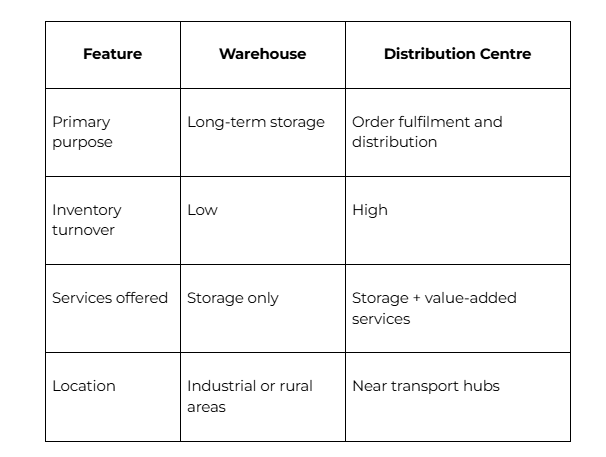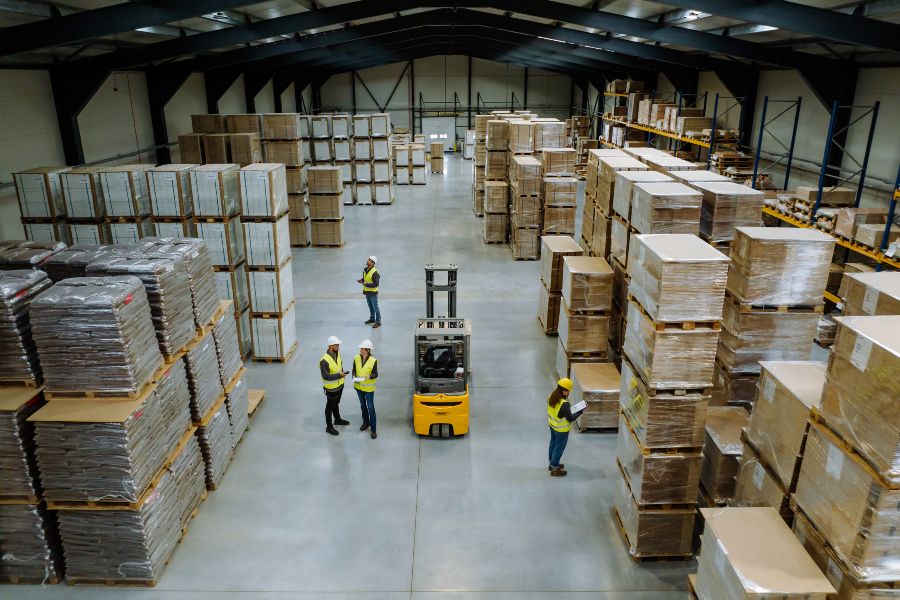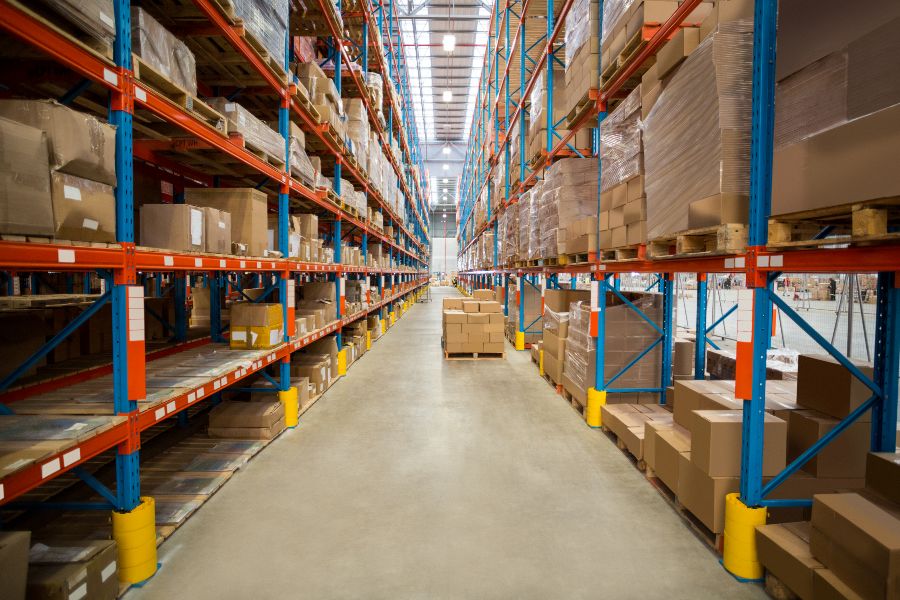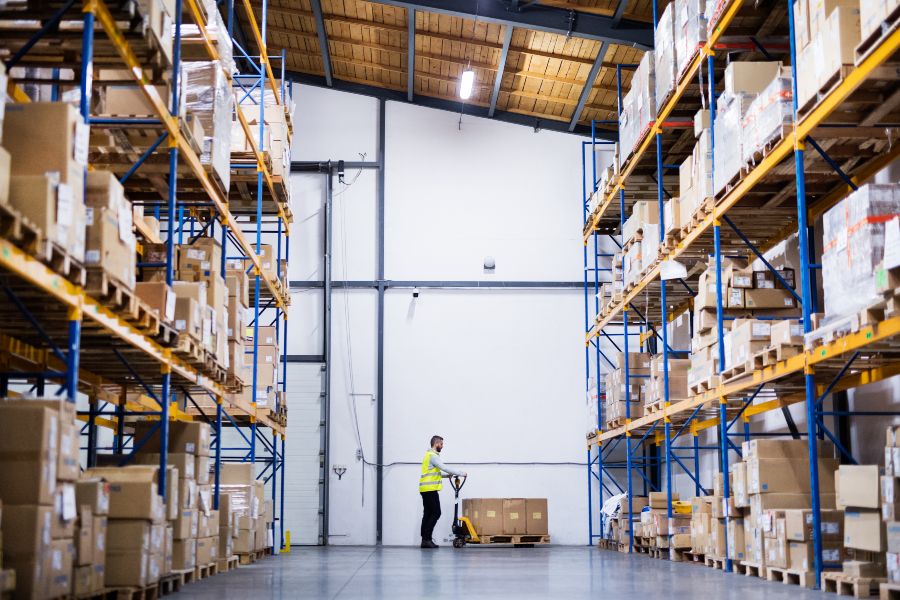How Distribution Centres Support Supply Chains
A distribution centre, also known as a logistics centre or fulfilment centre, plays a central role in modern supply chains, acting as more than just a place to store goods. It is a facility designed to receive, organise, and quickly move products to retailers, wholesalers, or directly to customers. By focusing on efficiency and speed, it ensures products flow smoothly from manufacturers to their final destination.
Unlike traditional warehouses that primarily hold stock, distribution centres emphasise order fulfilment, packing, and shipping. They often incorporate advanced systems and technology to manage inventory, streamline operations, and reduce delivery times. This makes them a crucial link between businesses and the people who purchase their products.
Understanding how distribution centres operate provides insight into why they are vital for industries ranging from retail to e-commerce. From their core functions to the technology that drives them, each element shapes how goods move across supply chains and reach the market efficiently.
Automate the Pick, Nail the Promise
Scale fast with robotics-driven accuracy, then delight shoppers at the doorstep. Streamline your operations with Robotic Order Fulfilment and keep delivery windows tight with Same-Day Courier Delivery - (02) 9090 4747.
Definition of a Distribution Centre
A distribution centre is a facility that manages the flow of goods between manufacturers, suppliers, retailers, and customers. It focuses on the storage, handling, and movement of products to ensure timely and accurate delivery across the supply chain. A fulfilment centre is not designed for long-term storage but for efficient product movement. Goods typically arrive, are processed, and leave within a short period. This makes speed and accuracy central to its operations.
Most centres use warehouse management systems (WMS) to track inventory, manage picking, and coordinate shipping. Automation, such as conveyor systems and robotic picking, is increasingly common to reduce errors and increase throughput.
They are often strategically located near major transport hubs like highways, ports, or airports. This placement reduces transit times and lowers transport costs.
Distribution centres may also provide value-added services such as packaging, labelling, product assembly, and returns handling. These functions allow businesses to meet customer requirements more effectively while keeping logistics streamlined.
Comparison with Warehouses
While both facilities store goods, their objectives differ. A warehouse emphasises long-term storage and inventory preservation, whereas a fulfilment centre prioritises rapid order fulfilment and product flow.

Warehouses often hold bulk stock for extended periods, making them suitable for raw materials or seasonal goods. Distribution centres, however, act as active nodes that keep products moving toward customers or retail outlets.
Role in Supply Chain
Distribution centres serve as intermediaries between production and consumption. They consolidate goods from multiple suppliers, sort them, and redistribute them to retailers, wholesalers, or directly to customers.
By managing inventory centrally, they reduce the need for retailers to hold large amounts of stock. This improves efficiency and lowers storage costs across the supply chain.
They also play a critical role in e-commerce fulfilment. Online orders are processed, picked, packed, and shipped directly from these facilities. This function has become increasingly important as customer expectations for fast delivery continue to grow.
In addition, fulfilment centres help businesses minimise stockouts and delays. By keeping inventory closer to demand centres, they enable faster replenishment and more reliable service levels.
Core Functions of Distribution Centres

Distribution centres focus on moving goods efficiently through the supply chain. They handle incoming stock, manage inventory levels, and prepare products for timely delivery to retailers, wholesalers, or end customers.
Order Fulfilment
Order fulfilment involves receiving customer or retailer requests and ensuring the right products are picked, packed, and shipped accurately. A fulfilment centre uses structured processes and technology to minimise errors and delays.
Tasks often include:
- Picking: Selecting items from storage based on order details.
- Packing: Preparing goods securely for transport.
- Dispatching: Coordinating shipments with carriers.
Accuracy is critical, as mistakes can lead to returns, higher costs, and reduced customer satisfaction. Many centres rely on barcode scanning and automated systems to improve speed and precision.
Inventory Management
Inventory management ensures that stock levels remain accurate and aligned with demand. Unlike warehouses that store products for long periods, fulfilment centres focus on short-term storage with quick turnover.
Key activities include:
- Stock tracking: Monitoring quantities in real time.
- Replenishment: Restocking items to avoid shortages.
- Cycle counts: Regular checks to maintain data accuracy.
Centres often use inventory management software to integrate with suppliers and retailers. This reduces the risk of overstocking or stockouts, helping businesses maintain reliability in their supply chains.
Product Sorting
Product sorting determines how goods are grouped, organised, and directed to their next destination. This process ensures that items move efficiently from receiving areas to storage, picking zones, or outbound docks.
Sorting may be manual or automated, depending on the facility’s scale. Automated conveyor systems and scanning technologies often speed up the process, especially for high-volume operations.
Effective sorting reduces handling time and prevents bottlenecks. It also ensures that products destined for different retailers, regions, or customers are separated correctly, making final delivery more efficient and cost-effective.
Types of Distribution Centres
Different types of fulfilment centres exist to meet specific supply chain needs. Their design, equipment, and operations depend on the products handled, the speed of fulfilment required, and the customers they serve. Like us at SKUTOPIA, which operates state-of-the-art 3PL fulfilment hubs in Sydney and Melbourne, enabling faster same-day service in select metro areas.
Retail Distribution Centres
Retail fulfilment centres supply goods directly to physical stores. They focus on bulk storage and efficient replenishment rather than processing individual customer orders.
These facilities usually receive large shipments from manufacturers or wholesalers, break them down into smaller loads, and then dispatch them to multiple retail outlets. This helps retailers keep shelves stocked without storing excessive inventory in-store.
Key features often include:
- Bulk handling equipment for pallets and cartons
- Cross-docking areas to reduce storage time
- Proximity to retail networks for faster delivery
By centralising inventory, retailers reduce transport costs and improve stock accuracy across their store network.
E-commerce Distribution Centres
E-commerce fulfilment centres manage high volumes of small, individual orders for online stores. Unlike retail-focused facilities, they prioritise speed, accuracy, and last-mile delivery.
These centres rely heavily on automation, including conveyor systems, barcode scanning, and sometimes robotics, to process thousands of orders daily. Packaging stations are designed for quick turnaround, while integrated IT systems track inventory in real time.
Important functions include:
- Order picking and packing tailored for single-item or mixed-item shipments
- Returns processing to handle frequent customer returns
- Carrier integration for same-day or next-day delivery options
Their role is critical in supporting online shopping, where customer expectations for fast and reliable service are high.
Cold Storage Facilities
Cold storage facilities specialise in temperature-sensitive goods such as fresh produce, dairy, meat, seafood, and pharmaceuticals. They maintain controlled environments to preserve product quality and prevent spoilage.
These centres often include multiple temperature zones, such as chilled, frozen, and ambient-controlled rooms. Advanced monitoring systems track temperature and humidity continuously to ensure compliance with safety regulations.
Key considerations include:
- Specialised handling equipment to operate in cold environments
- Energy-efficient refrigeration systems to reduce costs
- Strict hygiene protocols to meet food safety standards
Cold storage centres are essential for industries where product integrity depends on strict environmental control from supplier to consumer.
Ship Smarter, Everywhere
Cut transit times and expand reach by pairing a global carrier network with seamless store syncing. Tap 100+ Global Carriers and switch on one-click order sync via Shopify Integration - (02) 9090 4747.
Distribution Centre Location and Design Considerations

The effectiveness of a fulfilment centre depends heavily on where it is built, how the internal space is arranged, and how easily it connects to transport networks. Each of these elements influences cost efficiency, service levels, and the ability to adapt to future needs.
Site Selection Factors
Choosing the right site requires balancing customer proximity, transport availability, and land costs. A location close to major population centres reduces delivery times and transport expenses. At the same time, sites should provide room for expansion to accommodate future growth.
Environmental and regulatory considerations also play a role. Local zoning laws, building approvals, and environmental impact assessments can affect both timelines and ongoing operations. Ignoring these factors may result in costly delays or restrictions.
Labour availability is another practical concern. A site with access to a skilled workforce ensures reliable staffing for warehousing, handling, and transport functions. Proximity to universities or training centres can further support long-term recruitment.
Key factors in site selection include:
- Distance to customers and suppliers
- Land and facility costs
- Local regulations and approvals
- Workforce availability
- Scope for future expansion
Layout and Infrastructure
The internal layout determines how efficiently goods move through the facility. Clear separation of receiving, storage, picking, and dispatch areas reduces congestion and errors. Using wide aisles in high-traffic zones and narrower aisles in storage-only areas helps balance space use and accessibility.
Infrastructure choices also matter. The type of racking system, floor load capacity, and ceiling height affect how inventory is stored and retrieved. Facilities handling fast-moving goods often benefit from automated picking systems, while slower-moving items may be suited to traditional shelving.
Energy efficiency and sustainability should not be overlooked. Features such as LED lighting, solar panels, and efficient HVAC systems lower operating costs and support compliance with environmental standards.
Accessibility
A distribution centre needs reliable access to multiple transport modes. Locations near major highways, ports, or rail hubs reduce transit times and provide flexibility in routing. This is especially important when serving both metropolitan and regional areas.
Accessibility within the site is equally important. Truck entrances, loading docks, and yard space must accommodate vehicle sizes without causing bottlenecks. Adequate parking and safe pedestrian routes also support smooth daily operations.
Technology can further enhance accessibility. Real-time traffic monitoring, route optimisation software, and integrated transport management systems help ensure goods leave and arrive on schedule. These tools reduce delays and improve overall service reliability.
Technology Utilised in Distribution Centres
Fulfilment centres rely on advanced technology to manage inventory, improve accuracy, and speed up order fulfilment. These tools support efficient movement of goods, reduce manual errors, and provide greater visibility across the supply chain.
Automation and Robotics
Automation plays a major role in reducing repetitive manual tasks and increasing throughput. Automated guided vehicles (AGVs) and autonomous mobile robots (AMRs) transport goods across facilities, limiting the need for forklifts and manual handling.
Robotic arms are often used for picking, packing, and palletising. They improve consistency in handling items of varying sizes and reduce strain on workers.
Conveyor systems and automated sortation equipment also streamline the flow of goods. By directing products to the correct location, these systems reduce delays and minimise human intervention.
The use of automation allows distribution centres to handle higher order volumes, especially during peak demand periods. It also helps maintain accuracy in fast-moving environments where speed is critical.
Warehouse Management Systems
A Warehouse Management System (WMS) provides the digital backbone of modern distribution centres. It connects with ecommerce platforms, enterprise resource planning (ERP) systems, and transportation networks to coordinate operations.
Core functions include:
- Inventory control: tracking stock levels in real time
- Order processing: directing workers or robots to pick and pack items
- Location management: optimising storage space and product placement
Many WMS platforms integrate with automation equipment, ensuring a seamless connection between software and machines. This reduces bottlenecks and improves decision-making.
Cloud-based WMS solutions are increasingly common, giving managers access to data from any location. This flexibility supports multi-site operations and allows quick adjustments when demand shifts. Gone are the days when a warehouse operator, in a crucial role, supervises every part of the process for the team. WMS is the future for eCommerce in Australia and the world.
Tracking and Data Analytics
Tracking systems provide visibility into inventory movement and order status. Barcode scanning and RFID tags are widely used to capture product data at each stage of handling.
Real-time monitoring helps identify delays, misplaced stock, or bottlenecks. This visibility enables faster problem resolution and reduces the risk of stockouts or overstocking.
Data analytics extends beyond tracking by identifying patterns in demand, labour usage, and transport performance. Managers can use these insights to forecast needs, adjust staffing levels, and optimise delivery routes.
By combining tracking with analytics, distribution centres gain a clearer picture of operational efficiency. This supports more accurate planning and helps maintain service levels while controlling costs.
Benefits of Distribution Centres

Distribution centres provide structured processes that streamline product movement, reduce unnecessary costs, and strengthen service reliability. They act as central hubs that align storage, handling, and delivery functions in ways that directly support both business operations and customer expectations.
Improved Efficiency
A distribution centre improves efficiency by consolidating inventory from multiple suppliers into one location. This centralisation reduces the time and complexity involved in managing stock across several facilities.
Automation plays a significant role in efficiency gains. Many centres use barcode scanning, warehouse management systems (WMS), and automated picking tools to speed up order processing while reducing errors. These technologies help staff handle larger order volumes without compromising accuracy.
Efficiency also comes from strategic location. By placing distribution centres near transport networks, businesses can reduce transit times and streamline inbound and outbound logistics. This ensures goods move quickly from suppliers to customers or retail outlets with minimal delays.
In practice, these improvements shorten lead times, improve inventory turnover, and allow businesses to meet customer demand changes.
Cost Reduction
Distribution centres help lower costs by reducing duplicate storage facilities and consolidating shipments. Instead of shipping smaller loads from multiple warehouses, businesses can send consolidated orders from a single point, which cuts freight expenses.
Inventory management also contributes to cost savings. With better visibility into stock levels, businesses can reduce overstocking and avoid unnecessary holding costs. Accurate forecasting and centralised control help prevent both excess inventory and stockouts.
Labour costs are another area of savings. Automation and streamlined workflows reduce manual handling, allowing fewer staff to manage higher volumes. This not only lowers wages but also minimises errors that could lead to costly returns or re-shipments for the entire process.
Energy and space utilisation further add to cost efficiency. A well-designed fulfilment centre maximises storage density and reduces wasted floor space, lowering operating expenses.
Enhanced Customer Service
Distribution centres directly support customer service by enabling faster and more reliable order fulfilment. With inventory stored closer to demand centres, businesses can shorten delivery times and meet promised shipping windows more consistently.
Accuracy in order picking also improves customer satisfaction. Fewer mistakes mean fewer returns, which saves customers time and builds trust in the supplier. Many centres use scanning and tracking systems to ensure the right product reaches the right destination.
Flexibility is another advantage. Distribution centres can handle a mix of bulk shipments to retailers and individual orders for online customers. This adaptability allows businesses to serve different sales channels from one hub.
In addition, real-time tracking provides customers with visibility over their orders. Timely updates and predictable delivery windows strengthen confidence and encourage repeat purchases.
Where SKUTOPIA Fits in Your Distribution Strategy
If you’re exploring ways to make fulfilment faster, more accurate, and easier to scale, SKUTOPIA can complement the role of your distribution centre without adding complexity. For companies and brands across the country, we help teams achieve operational excellence with a dedicated approach to security, responsible processes, and pragmatic supervision, even in challenging peaks.
What you can expect:
- Seamless integrations with major e-commerce platforms and WMS that automatically sync orders, inventory, and returns.
- Structured pick-and-pack and dispatch processes are tuned for speed and accuracy, efficiently completing orders through pick-to-line workflows and handling exceptions clearly when issues arise.
- Carrier-agnostic shipping with smart routing to save money and delivery time, including line-haul optimisation.
- Value-added services: kitting, labelling, pre-packing boxes, light assembly, and streamlined returns.
- System health dashboards and alerts surface demand trends, service levels, and stock positions, for example, by SKU, channel, or country, making implementing replenishment rules straightforward.
- Governance baked in: role-based access, audit trails, and site protocols that keep data and facility security front and centre under responsible supervision.
- A single point of contact coordinates onboarding and ongoing support, with dedicated specialists to help you implement best practices.
Reviewing your network design or considering a 3PL?
Explore how SKUTOPIA can align with your service levels and growth plans. Learn more and see what a right-sized fulfilment solution could look like for your business. Contact us today and let us help your business grow - (02) 9090 4747.
